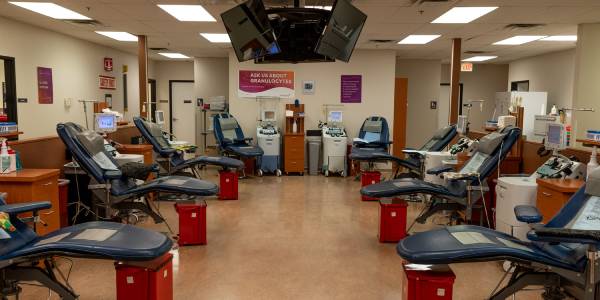During the spring of 2020 — in the early days of the COVID-19 pandemic — when stay-at-home orders were common, there was widespread confusion about what was safe to do. The most ordinary of tasks, like grocery shopping and banking, became a series of gauntlets to run. Many activities came to a screeching halt.
For several long weeks, some of the most committed blood donors postponed giving blood. But the real impact on blood collection was felt when thousands of blood drives across the country were canceled and hundreds of thousands of expected blood donations just didn’t happen.
For Vitalant and other blood services organizations, most volunteer blood drive hosts have always been schools, churches and large businesses. As most of these organizations adjusted to operating remotely, face-to-face blood drives became implausible. And for those organizations that still gathered, few were allowing off-site individuals onto their grounds, including Vitalant’s staff.
In the following months, as Americans grew accustomed to masks and more people received vaccines, blood donors slowly returned to donation centers. But donation rates continue to ebb and surge as unpredictably as COVID-19 itself, making it a challenge to maintain a steady supply to hospitals.
Blood drives have not returned at the same pace or frequency. While there has been a little progress scheduling new blood drives in the last few months, the number of blood donations given at community blood drives is far below pre-pandemic levels. In 2019, approximately 60% of all Vitalant blood donations came from community blood drives; today, only about 50% do.
This means that many blood donors simply cannot give blood because there isn’t a convenient location for them to donate. Some of the most active blood drives were small-town community drives and those hosted in rural high schools. But for the sake of community and school safety, most of these have not restarted, even as mask wearing and other precautions have lessened.
To help counter canceled community blood drives, Vitalant created Virtual Blood Drives, an online program that allows interested blood drive coordinators to remotely recruit and motivate their donors to give blood in donation centers or at another nearby blood drive. We cannot thank our blood drive coordinators who hold virtual or traditional drives enough for stepping up during this unprecedented time to continue their commitment to save lives in a new environment.
The sustainability of the blood supply is unclear in the long term unless donors give as frequently as they did during the peak of the pandemic and more volunteers step up to host blood drives.
If every blood donor gave just one more time in a year, blood shortages would be a thing of the past. Will you?
If you are able, please consider hosting a virtual blood drive or a traditional drive at your workplace, in your neighborhood or place of worship. Learn more about how you can make a greater impact in your community. It’s both rewarding and life changing.

